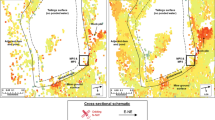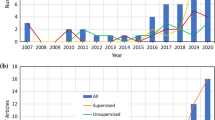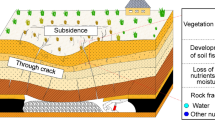Abstract
Geophysical investigations using 2-D DC resistivity were carried out on old parts of two similar landfills, with waste of different ages. The data sets, which included high data density in both vertical and horizontal directions, were interpreted with 2-D smoothness constrained inversion. The landfills were excavated after the surveying. The objective was to test the capability of the resistivity method as a pre-characterization technique. The objectives were only partially fulfilled. First, the moisture content was the parameter that appeared to exert the dominant control over the resistivity distribution of the landfill. The most important potential information that can be recovered is, therefore, an indication of the waste piles hydraulics. Second, it was neither possible to estimate the amount of recoverable soils, nor to correlate the type of waste with the resistivity models. However, discrete anomalies were identified, and if specific materials are searched for, the resistivity models indicate possible places to search.
Similar content being viewed by others
Author information
Authors and Affiliations
Additional information
Received: 23 July 1998 · Accepted: 20 October 1998
Rights and permissions
About this article
Cite this article
Bernstone, C., Dahlin, T., Ohlsson, T. et al. DC-resistivity mapping of internal landfill structures: two pre-excavation surveys. Environmental Geology 39, 360–371 (2000). https://doi.org/10.1007/s002540050015
Issue Date:
DOI: https://doi.org/10.1007/s002540050015




